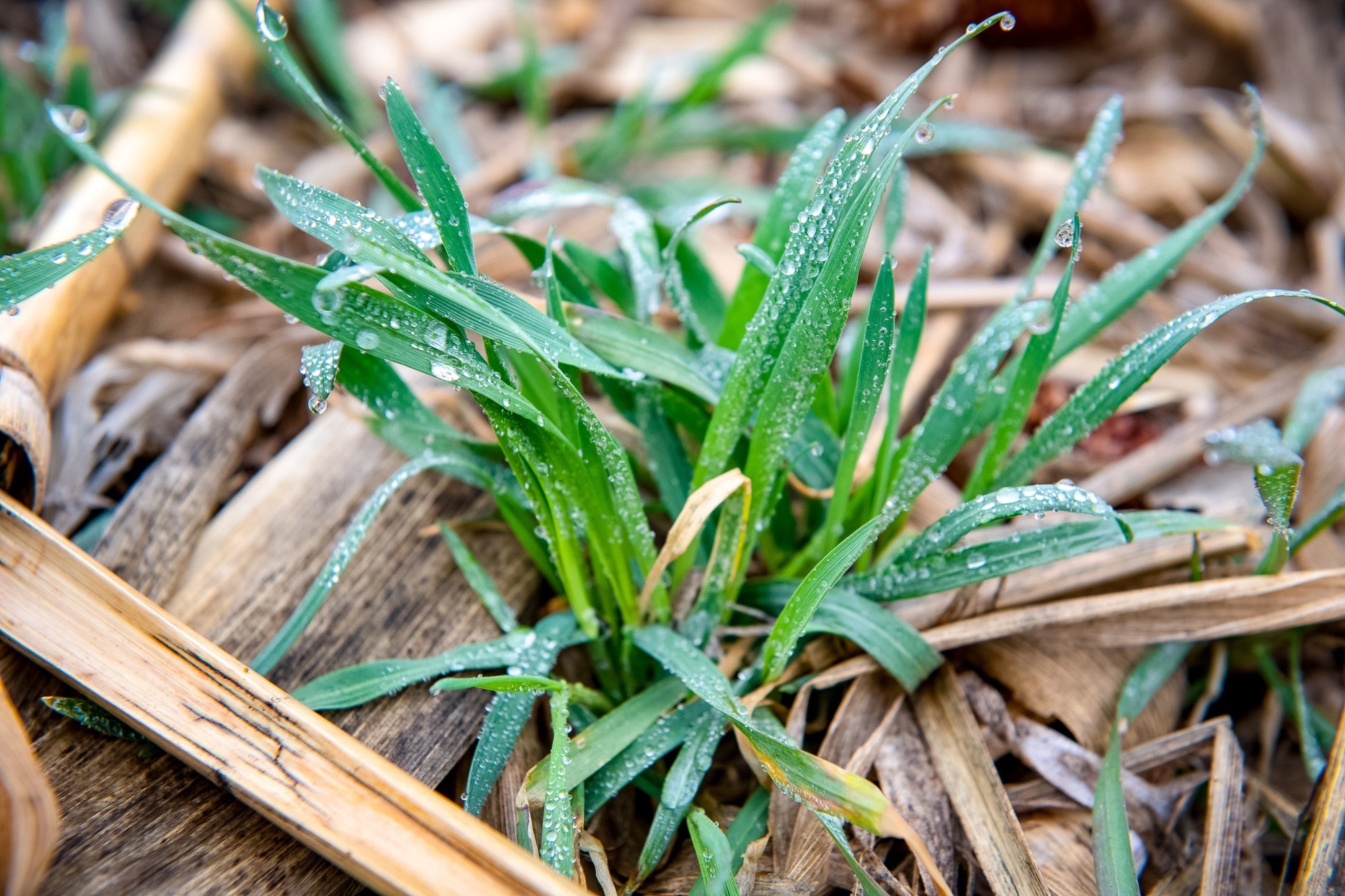
Farmers say growing cover crops in a manured system work well on their farms. (Photo: Iowa Soybean Association)
Farmers share tips for using cover crops in manured systems
September 9, 2021 | Kriss Nelson
Practice makes perfect, and farmers shouldn’t shy away from growing cover crops in fields being applied with manure this fall.
Through some trial and error, farmers Dwight Dial, of Lake City, and Roger Zylstra, of Lynnville, have successfully applied manure to their cover crops for several years.
Both Dial and Zylstra are longtime no-till farmers. Adding cover crops to their no-till system has improved soil health; testing results in cooperation with the Soil Health Partnership have proven the effectiveness of these combined practices.
The farmers then realized they didn’t want to miss out on utilizing cover crops in order to have a field open to apply their manure generated on their own farms.
Roger Zylstra
When Zylstra became interested in cover crops, he was fearful it would not work for his farm simply for the fact he had manure that needed applied.
“I just knew it was not going to work because I put manure on in the fall and it would destroy the cover crops,” he said.
One fall he decided to give it a try on a small field of soybean stubble. The cereal rye came up beautifully that fall. In November, he applied manure using injectors and sweeps on his manure tank.
“I had the most beautiful green field you can imagine,” Zylstra said. “I go out there, put manure on and turned the field black and I thought, ‘so much for that.’”
Looks were deceiving for Zylstra; he realized there was actually little kill.
“By the time March came around the next year, you could barely see that I had made any tracks in the field where I had put manure on,” he said. “I was just amazed.”
The biggest takeaway for the Lynnville farmer was cereal rye is hard to kill with the ground disturbance caused by the manure application. Since then, he decided using cover crops and manure systems together would work. He proceeded with seeding cereal rye as a cover crop on more of their acres. He changed from a coulter-style injector on his manure tank to help lower soil disturbance. Zylstra’s been successfully applying manure to the cereal rye for more than eight years.
“For us it has just worked out and it is just part of our normal practice now,” he said.
Dwight Dial
Dial, a no-till farmer, has been using cover crops with manure applied on his farm in Calhoun County for seven years.
He had his cover crops aerial seeded this past week. He prefers this method over seeding after harvest to give it a longer chance to grow. This means he has no choice but to apply his manure into his cover crop acres.
Manure is applied on Dial’s farm in the fall and spring. Depending on the field’s location, it is either knifed into the ground utilizing no-till manure applicators or is applied by the umbilical method.
Knifing the manure in, which injects the manure six to eight inches into the ground, has minimal impact on cover crop acres.
The back-and-forth movement of the hose during the umbilical application can act as a roller/crimper. Some of the cover crop might be terminated due to that action, he said. Either way, Dial finds it is still worthwhile to have a cover crop down versus leaving the ground uncovered.
“Don’t be afraid to utilize both the manure and the cover crops systems,” Dial advised. “Don’t leave the acres bare just because that is where you want the manure.”
To help with compaction from the large manure tanks, Dial has been incorporating rapeseed into his cover crop system to break up the hardpan in the soil.
Research shows advantages to system
Iowa Soybean Association (ISA) Senior Field Services Program Manager Scott Nelson said research on fields where manure has been applied to cover crops is coming this fall. Some early data has shown yield advantages with five bushels per acre in one location and 11 bushels per acre at another.
Nelson said farmers should be diligent in checking planting depth while planting corn into cover crops with a manure application.
“Sometimes we see shallower planting depth in corn following cover crops as the residue raised up the gauge wheels in some cases,” he said.
Adding planting into cover crops may require more downforce pressure, especially in a dry spring. It is also recommended using a starter fertilizer or an early side-dress application of nitrogen in corn under the four-leaf stage following cover crops.
“Cover crops do such a great job immobilizing nitrogen, that sometimes there is not enough nitrogen for the corn crop in the early season, thus we recommend early season nitrogen applications,” Nelson said. “Total rates of nitrogen do not need to be greater in corn following cover crops, just applied a little earlier than with standard side-dress applications.”
Opportunities ahead
Zylstra would like to see more producers incorporate cover crops and other conservation practices onto their farms.
“It’s hard for us to try new things, but if we don’t figure out how to manage our farms, we are going to be told how to do it and I would rather figure it out on my own,” he said.
Back